Thursday, February 11, 2010
Where and What is your Wonderland?
Alice’s Adventures in Wonderland, seems to attract many different readers as the children can read for the fantastical journey and adults can read to understand Lewis Caroll’s satirical humor. For instance, while the Caucus race may seem like a fun game to be played by children where everyone wins, adults understand this to be poking fun at the American government’s use of a democracy, with the North and South battling for control of the country. Likewise, the Queen of Hearts becomes a light hearted representation of Queen Victoria in England. This use of humor found within what is thought to be a child’s book at plain view, becomes much more as Victorian England mentality is throughout. Like a “good Victorian English school girl”, Alice attempts to recite her lessons while in Wonderland, trying to add reason and logic into the world of nonsense; while she does not understand what is fully going on, the reader sees Alice “grow” throughout her adventure. Each time she overcomes an obstacle within Wonderland, Alice grows physically at times (by eating mushrooms or even cake), and mentally as she ventures deeper into the world by herself, fearlessly.
In the end, Alice’s ability to fully immerse herself into her Wonderland, becomes a gate way to the older reader to embrace their own inner child or wonderland and attempt to let loose. Alice’s sister attempts to fully embrace herself within the tale, but “half-believed herself in Wonderland, though she knew she had but to open them again, and all would change to dull reality-” (Caroll 117). Here Wonderland becomes a memory of childhood to be passed on to generations and generations of children, in hopes that they too embrace their wildest dreams.
Alice In Wonderland Reviewed
This reviewer would be remiss if he were to omit praise for the fabulous illustrations by Mr. Tenniel. Not only has Mr. Tenniel co-opted the magnificent world of Carroll’s Wonderland but also his own marvelous contribution is vital to its flawless execution.
Review of Alice in Wonderland
Wednesday, February 10, 2010
A Picture is Worth a Thousand Words...
Hear, hear!
HERE are some of the pictures Carroll took of Alice, her sisters, and other (little) girls:
[Note: Some of these are in the Broadview copies of Alice's Adventures in Wonderland]
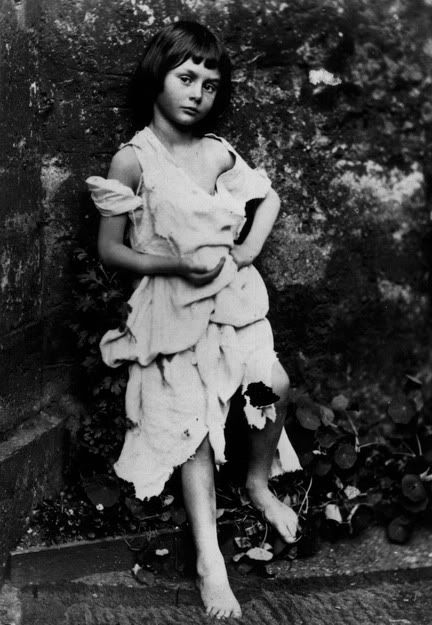

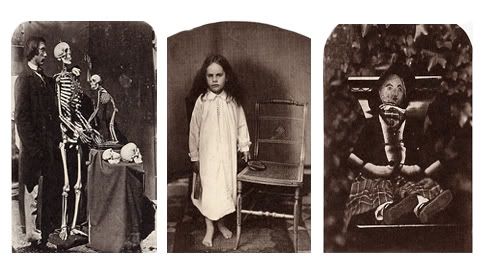
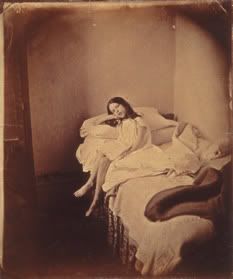

(This one's the most disturbing, in my opinion)
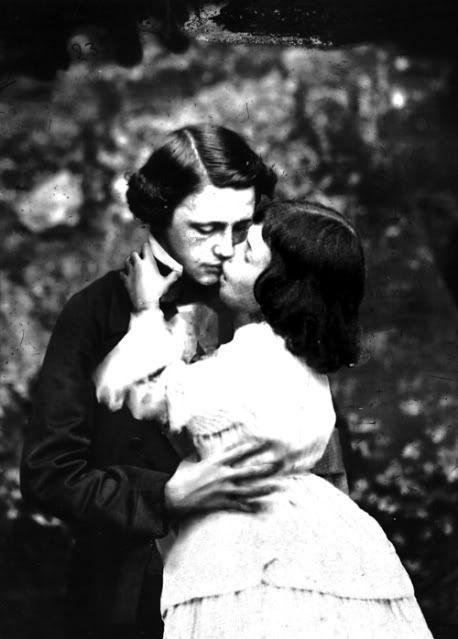
(And this one is obviously NOT one of Carroll's. I just thought was really good photography and also very cool!)
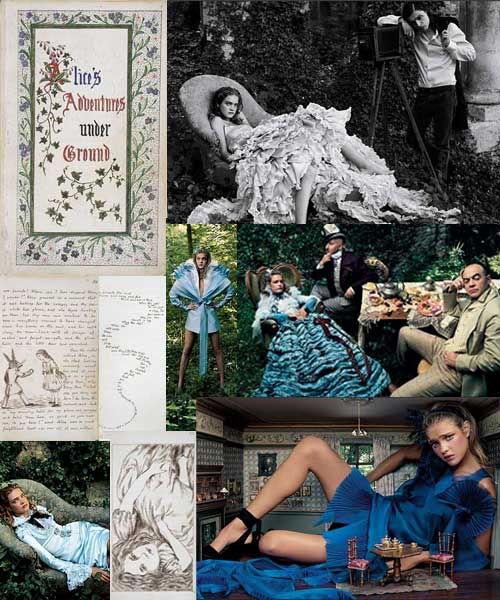
Alice's Adventures in Wonderland: complexity beneath a cheerful surface
But adults can also take delight in this novel - and even more. One of the novel's major strength is its pun. There is the literal level of language, where metaphors simply do not work, such as
"one of the guinea-pigs (...) was suppressed(...). (As that is rather a hard word, I will just explain to you how it was done. They had a large canvas bag, which tied up at the mouth with strings: into this they slipped the guinea-pig, head first, and then sat upon it.) "I'm glad I've seen that done" thought Alice. "I've so often read in the newspaper, at the end of trials, 'There was some attempt at applause, which was immediately suppressed by the officers of the court,' and I never understood what it meant till now.""
Or the confusion caused by the misunderstanding of (almost) similiar pronounced words:
"'Mine is a long and sad tale!' said the Mouse.(...) 'It is a long tail, certainly,' said Alice, looking down with wonder at the Mouse's tail; ' but why do you call it sad?'"These are just two examples to get a first impression, there is much more in the text, and some passages really make you smile.
But beneath this funny surface - though it might lead to question the meaning and importance of language - are more serious topics, such as the lost of childish innocence and Alice's struggle to define and form her identity as she constantly changes her size. "Who in the world I am?" is one of the central questions in this novel. I do not want to give away too much of the stories, just be prepared that there is a lot going on. Alice's Adventure's in Wonderland is not only a happy fairy-tale.
So, is this novel a good novel to educate your children? That is a question depending on your understanding of education. Alice sometimes seems to be a well-schooled girl, but she is also noisy, saucy, impertinent and precocious. If you want a well-behaved child who simply memorizes his/her lessons, than I recommend not to use this novel as a mean of education. Carroll rather emphasizes a very modern understanding of learning and education, comparable to Kingsley's understanding presented in his novel Water Babies, published a couple of years ago: learning through experience. If you want a self-cofident child that will be able to deal with unexpected, extraordinary situations (after a while), to progress by learning/experiencing, that is able to speak for itself, to make own decisions (to certain degrees), than you can use this novel as an educational one, but be aware that Alice does not always serve as a role model.
No matter how you approach this novel, the reading will be enriching. Even if you do not like (to think of) the existential questions, you will have some cheerful hours at least.
Lewis Carroll bio
Lewis Carroll biography 27 January 1832- 14 January 1898
(This information found on http://library.thinkquest.org/10977/carroll/)
Background- Charles Lutwidge Dodgson. (Lewis Carroll is the Latinized version of his first two names.) Aside from being an author, he was also a mathematician, Anglican deacon, and amateur photographer. He also invented a nyctograph, a device used for writing down thoughts in bed without getting up and turning out the light, and various word games including an early version of scrabble. He was brought up in a conservative, English family; and most of his family members were either in the army or held offices in the Church of England. He was the third of eleven children and found ways to entertain his family by doing marionette shows, writing poems, and doing magic tricks. Carroll excelled in math and theology during school, and soon developed an interest in pursuing both fields as professions. Despite his playful childhood, Carroll became very serious about his mathematician’s work. Logic appealed to him more as a game, which brings out his humorist’s qualities. He suffered from a stutter that made public speaking and preaching hard. He attended Christ Church Oxford and won the Christ Church Mathematical Lectureship which enabled him to stay on and teach. The pay was good but he found the work boring. It was at Oxford where he met the children of Dean Liddell, the inspiration of Alice’s Adventures in Wonderland.
Liddell Sisters and the Beginnings of Alice- Carroll always seemed to have an affinity with children, but the Liddell sisters clearly had a special place in his heart. Alice, Lorina, and Edith Liddell used to go on picnics with Carroll, who would tell the girls stories. Alice’s Adventures in Wonderland was being formed from his stories told to the girls. One rainy day, he told the girls such a great story that Alice begged him to write it down. Novelist Henry Kingsley managed to read the story and confronted Carroll about publishing the story. Surprised by this request, Carroll agreed. He gained fame as a writer, and sometimes unwanted attention— according to one popular story which Dodgeson roundly denied, Queen Victoria loved Alice’s Adventures in Wonderland so much that she suggested the Dodgeson dedicate his next work to her, and was presented with his next work, An Elementary Treatise on Determinants.
Controversies- Carroll was accused of being on drugs, which fueled his imaginative worlds. Also, his photographs of the Liddell sisters (particularly Alice) were deemed inappropriate and reflected Carroll’s evident obsession with young girls. Carroll was also the only Senior Student at Christ Church who was allowed to stay on at the college despite being a priest— Dodgeson had to appeal to Dean Liddell for permission to not proceed with his ordination . At around the time Carroll insisted on not becoming a priest he was troubled by an unexplained sense of guilt, and in his diaries from this period he refers to himself as a “vile and worthless” sinner.